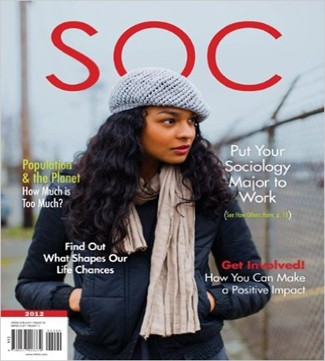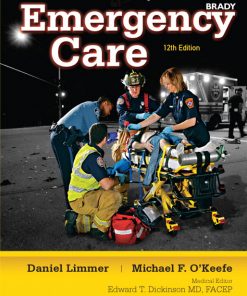SOC 2012 2nd edition Witt Test Bank
$55.00
SOC 2012 2nd edition Witt Test Bank
You will receive this product within 24 hours after placing the order
978-0077403379
ch03
Student: ___________________________________________________________________________
1. The totality of our shared language, knowledge, material objects, and behavior is known as
A. culture.
B. society.
C. socialization.
D. social structure.
2. Culture helps us to
A. experience the external world in a physical way.
B. perceive nature directly.
C. interpret information received by our senses.
D. bypass the process of interpretation.
3. Which of the following best defines a society?
A. the totality of learned, socially transmitted behavior
B.the structure of relationships within which culture is created and shared through regularized patterns of
social interaction
C. the norms, values, and beliefs of a large group of people
D. All of the answers are correct.
4. Which of the following best explains the role of a society?
A. It is a dependent group that owes allegiance to a larger group.
B. It provides the context within which cultural relationships develop.
C. It serves as a basis for comparison among several different cultures.
D. It mediates between the dominant culture and several subcultures.
5. Cultural preferences vary across societies. Which of the following is an example of a cultural preference?
A. marriage ceremonies
B. methods of education
C. religious doctrines
D. All of the answers are correct.
6. Common practices and beliefs shared by all societies are called
A. cultural integrators.
B. cultural diffusers.
C. cultural universals.
D. cultural relatives.
7. In his research, George Murdock determined which of the following to be a cultural universal?
A. war
B. astronomy
C. funeral ceremonies
D. All of the answers are correct.
8. What is the most common stance among researchers on the “nature vs. nurture” debate?
A. They view nature as the dominant factor in shaping outcomes.
B. They view nurture as the dominant factor in shaping outcomes.
C. They view nature and nurture as equally determinative.
D. They view the debate as inadequate.
9. Sociobiology is the systematic study of
A. the social structure within the animal kingdom.
B. the interactions between humans and higher animal forms.
C. the social bases of biological behavior.
D. how biology affects human social behavior.
10. Which of the following would be of interest to a sociobiologist?
A. the social origins of human culture
B. how social interactions shape human behavior
C. explaining how our thoughts and actions are linked to our genes
D. how different natural environments shape human behavior.
11. Innovation interests sociologists because it
A. creates a sudden change in society.
B. spreads change across national boundaries.
C. often has continuing effects beyond the initial change.
D. changes the structures of authority within a society.
12. Which of the following is a method through which culture is diffused?
A. military conquest
B. tourism
C. the internet
D. All of the answers are correct.
13. Which of the following would be an example of discovery?
A. Catholicism
B. the Declaration of Independence
C. penicillin
D. the internal combustion engine
14. Which of the following would be an example of invention?
A. monarchy
B. coal
C. genes
D. superconductors
15. Which of the following examples illustrates the rapid globalization of culture?
A. Coca-Cola factories
B. Starbucks in China
C. war in Afghanistan
D. the discovery of DNA
16. English-speaking people in the United States commonly use words whose origins are from various
African, Asian, and non-English-speaking European cultures. This is an example of
A. nonmaterial culture.
B. cultural diffusion.
C. cultural shock.
D. cultural relativity.
17. In practice, globalization has led to
A. the cultural domination of developing nations by developed nations.
B. people in developing nations often discarding their traditional values.
C. native cultures being threatened by Western popular culture.
D. All of the answers are correct.
18. The physical or technological aspects of our daily lives are called
A. norms.
B. material culture.
C. transferred culture.
D. values.
19. Which of the following is NOT an example of material culture?
A. a basketball arena
B. a slice of pizza
C. a website
D. a wedding ceremony
20. Which of the following is true about nonmaterial culture?
A. It refers to ways of using material objects.
B. It includes customs and governments.
C. Both answers are true.
D. Neither answer is true.
21. Which of the following is NOT a component of nonmaterial culture?
A. language
B. values
C. religious objects
D. sanctions
22. Which of the following is true about the pace at which nonmaterial culture changes?
A. It is more resistant to change than material culture.
B. It is less resistant to change than material culture.
C. It changes at the same pace as material culture.
D. It does not change once it has been created.
23. What is culture lag?
A. The totality of learned, socially transmitted behavior.
B. Viewing people’s behavior only from the perspective of one’s own culture.
C. The relationship between material and nonmaterial culture
D. A period of adjustment when the nonmaterial culture is still struggling to adapt to new material
conditions.
24. Culture lag occurs because people in most societies are
A. more likely to change their material culture.
B. more likely to change their nonmaterial culture.
C. more likely to modify cultural universals.
D. less likely to change their folkways.
25. Which of the following is true about language?
A. It includes speech, writing, and gestures.
B. It expresses the inherent meanings in sounds.
C. There are approximately 1000 languages spoken in the world today.
D. It is a fairly static form of expression.
26. Which of the following is true about the Sapir-Whorf hypothesis?
A. It argues that the primary role of language is to describe reality.
B. It argues that language shapes what we see.
C. It argues that thought precedes language.
D. It argues that language is biologically determined.
27. In some parts of the United States, horse breeding and/or racing is commonplace. People involved in
these activities have developed different words to distinguish between breeds, sizes, and sexes of horses,
and these words are not very familiar to people not involved in the “horse world.” This is an example
of
A. cultural diffusion.
B. cultural integration.
C. the Sapir-Whorf hypothesis.
D. subcultural variations.
28. What is one of the contributions the feminist perspective has made to the study of language?
A.It suggests that gender-related language reflects the traditional acceptance of men and women in
certain occupations.
B. the Sapir-Whorf hypothesis
C. It suggests that men and women speak different languages.
D. It suggests that language is inherently gender-neutral.
29. Which of the following terms is NOT an example of the racial stereotypes transmitted by language?
A. blacklist
B. white lie
C. black tie
D. blackheart
30. Which of the following is an example of nonverbal communication?
A. a high five
B. a hug
C. a frown
D. All of the answers are correct.
31. Collective conceptions of what is considered good, desirable, and proper (or bad, undesirable, and
improper) are known as
A. values.
B. sanctions.
C. mores.
D. All of the answers are correct.
32. Which of the following is NOT one of the U.S. basic values on the list offered by sociologist Robin
Williams?
A. efficiency
B. faith
C. nationalism
D. material comfort
33. In surveys of first-year college students over the last 40 years, which value has shown the strongest gain
in popularity?
A. being very well-off financially
B. developing a meaningful life
C. achieving fame
D. finding true love
34. Which of the following is true about norms?
A. They are established standards of behavior maintained by a society.
B. They must be widely shared and understood.
C. They are classified as formal or informal.
D. All of the answers are correct
35. Formal norms enforced by the state are:
A. values
B. mores.
C. laws.
D. All of the answers are correct.
36. Informal norms are:
A. generally understood but not explicitly recorded.
B. deemed highly necessary to the welfare of a society.
C. enforced by the state.
D. None of the answers is correct.
37. While attending a prestigious lecture at a New York City museum, Bob noisily belches several times and
picks his nose. He is violating:
A. mores.
B. laws.
C. informal norms.
D. formal norms.
38. Mores are:
A. norms governing everyday social behavior, the violation of which raises comparatively little concern.
B. norms that are deemed highly necessary to the welfare of a society.
C. enforced by the state.
D. None of the answers is correct.
39. Which of the following is true about folkways?
A. They are norms that govern everyday behavior.
B. They are generally viewed as more important than mores.
C. Their violation creates significant social concerns.
D. They are generally rigidly applied.
40. Which of the following is NOT a culturally learned behavior?
A. mores
B. folkways
C. laws
D. instincts
41. Within the traditional Buddhist areas of Southeast Asia, which of the following is a folkway that
reinforces patterns of male dominance?
A. In the sleeping cars of trains, women do not sleep in upper berths, above men.
B. Hospitals that house men on the first floor do not place women on the second floor.
C. On clotheslines, women’s attire is hung lower than that of men.
D. All of the answers are correct.
42. Which of the following is an example of a norm that is often not followed because of weak enforcement?
A. teenage drinking of alcohol
B. use of shady accounting techniques in business
C. Both answers are correct.
D. Neither answer is correct.
43. Which of the following is an example of a norm that is often not followed because it represents adherence
to the norms of a particular subgroup?
A. teenage drinking of alcohol
B. use of shady accounting techniques in business
C. Both answers are correct.
D. Neither answer is correct.











Reviews
There are no reviews yet.